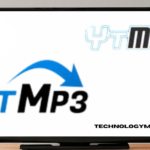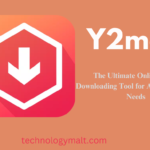Are you ready to embark on an exciting journey from beginner to expert in the world of SSIS 816? Buckle up as we dive into the depths of this powerful data integration tool, uncovering its secrets and unlocking its full potential. Whether you’re just starting out or looking to take your skills to the next level, this blog post will guide you through every step of the way. Get ready to transform your career and become a master of SSIS 816!
What is SSIS 816?
SSIS 816, also known as SQL Server Integration Services 2016, is a powerful Extract, Transform, Load (ETL) tool developed by Microsoft. It is part of the SQL Server Data Tools (SSDT) suite and plays a crucial role in managing data integration tasks within organizations.
This robust platform allows users to create workflows for extracting data from various sources, transforming it according to business requirements, and loading it into target destinations with ease. SSIS 816 offers a wide range of features such as drag-and-drop interface for building packages, support for different data formats, robust error handling capabilities, and scheduling options for automating processes.
By leveraging SSIS 816 effectively, businesses can streamline their data integration processes, improve efficiency, and make informed decisions based on accurate insights derived from consolidated datasets. Whether you’re a beginner or an experienced professional in the field of data analytics and management – mastering SSIS 816 opens up a world of possibilities to enhance your skills and accelerate your career growth.
The Importance of Learning SSIS 816
In the ever-evolving world of data management, learning SSIS 816 is crucial for professionals looking to stay ahead. This powerful tool allows users to efficiently extract, transform, and load data from various sources with ease.
By mastering SSIS 816, individuals can streamline their ETL processes, automate workflows, and optimize performance. This not only saves time but also ensures data accuracy and consistency across different systems.
Moreover, as organizations increasingly rely on data-driven insights to make informed decisions, proficiency in SSIS 816 opens up a world of career opportunities. From data analysts to BI developers, those skilled in SSIS are in high demand across industries.
Embracing the journey of learning SSIS 816 is not just about acquiring technical skills; it’s about future-proofing your career and becoming a valuable asset in today’s competitive job market.
Beginner Level: Understanding the Basics
Embarking on the journey of learning SSIS 816 can be both exciting and daunting, especially for beginners. Understanding the basics is crucial to building a strong foundation in this powerful ETL tool.
At the beginner level, you will dive into fundamental concepts like data sources, connections, and control flow tasks. You will learn how to create packages and execute them to move data from one place to another efficiently.
Getting familiar with the SSIS interface may seem overwhelming at first, but with practice and patience, you’ll soon navigate through it confidently. Paying attention to details like data types and transformations is key in ensuring smooth data integration processes.
As a beginner, don’t hesitate to explore tutorials, online resources, and hands-on exercises to solidify your understanding of SSIS basics. Remember that every expert was once a beginner too!
Intermediate Level: Mastering Transformations and Data Flow
At the intermediate level of mastering SSIS 816, you delve deeper into transformations and data flow. This phase is where you sharpen your skills in manipulating data with various components and tasks available within SSIS. Understanding how to efficiently transform and move data between sources becomes second nature.
Mastering transformations involves utilizing tools like Derived Columns, Conditional Split, and Lookup for complex data manipulations. You learn to streamline the flow of information from source to destination by mapping out paths through Data Flow Tasks.
With hands-on practice, you gain a better grasp of handling errors gracefully using error outputs and redirecting rows. Troubleshooting issues that arise during transformations becomes less daunting as you become more familiar with the debugging capabilities within SSIS.
Reaching this stage signifies significant progress in your journey towards becoming an expert in SSIS 816. The mastery of transformations sets a strong foundation for tackling more advanced concepts ahead.
Advanced Level: Optimizing Performance and Troubleshooting
In the advanced level of SSIS 816, optimizing performance and troubleshooting become critical skills to master. One key aspect is understanding how to fine-tune package execution for efficiency. This involves identifying bottlenecks in data flow and implementing best practices to improve overall performance.
Troubleshooting is another essential skill at this stage. Being able to pinpoint and resolve issues that may arise during package execution is crucial for maintaining a smooth workflow. This includes debugging errors, handling exceptions effectively, and ensuring data integrity throughout the process.
Moreover, advanced users often delve into techniques like parallel processing, caching mechanisms, and memory management strategies to enhance performance further. These optimizations can significantly impact the speed and reliability of data integration tasks within SSIS 816.
Reaching this stage signifies a deep understanding of SSIS capabilities and a knack for problem-solving in complex scenarios involving large datasets or intricate transformations.
Beyond SSIS 816: Real-World Applications and Career Opportunities
Beyond mastering SSIS 816 lies a world of real-world applications where your skills can truly shine. From automating data workflows to integrating disparate systems, the possibilities are endless. Companies across industries rely on SSIS experts to streamline their data processes and drive informed decision-making.
Career opportunities for those proficient in SSIS 816 are abundant. You could work as a data engineer, ETL developer, business intelligence analyst, or even a consultant helping businesses optimize their data integration strategies. The demand for professionals with SSIS expertise is only expected to grow as organizations continue to prioritize data-driven insights.
By honing your skills in SSIS 816 and staying updated on industry trends, you can position yourself for success in the ever-evolving field of data management. Embrace the challenges and opportunities that come with being an expert in SSIS – your career trajectory may surprise you!
Tips for Success in Learning
To succeed in learning SSIS 816, it’s essential to start with a solid foundation. Begin by familiarizing yourself with the basics of SQL Server Integration Services and understanding its core concepts. As you progress, focus on mastering transformations and data flow components to efficiently manipulate and move data within your packages.
Practice is key when it comes to honing your SSIS skills. Experiment with different scenarios, explore various functionalities, and challenge yourself with real-world datasets. Don’t hesitate to seek out online resources, forums, and tutorials for additional support and insights.
Optimizing performance is crucial in SSIS development. Learn how to fine-tune your packages for speed and efficiency while also becoming adept at troubleshooting common issues that may arise during execution.
Stay updated on the latest trends and technologies in the field of data integration to remain competitive in the job market. Networking with professionals in the industry can provide valuable opportunities for growth and career advancement.
Expectation of SSIS 816 in future
As technology continues to evolve, the future of SSIS 816 holds great promise for data integration professionals. With advancements in cloud computing and big data analytics.
In the coming years, we can anticipate more robust features that enhance scalability, flexibility, and performance. This means that users can expect even faster processing speeds and improved efficiency when handling large volumes of data.
Furthermore, as organizations increasingly rely on real-time insights for decision-making, SSIS 816 is likely to offer enhanced capabilities for streamlining data pipelines and supporting near-instantaneous data processing.
The future outlook for SSIS 816 is bright, with continued innovation driving its evolution as a powerful tool for managing complex data integration tasks in an ever-changing digital landscape.
Conclusion
As we wrap up this journey through it, it’s evident that the world of data integration is vast and ever-evolving. From grasping the basics to delving into advanced optimizations, there’s always more to learn and explore.
The realm of SSIS 816 offers endless possibilities for those willing to dive deep and harness its power. As you continue your quest for mastery in it, remember that each challenge presents an opportunity for growth and development.
Stay curious, stay determined, and embrace the continuous learning process that comes with mastering SSIS 816. The skills you acquire along the way will not only benefit your current projects but also pave the way for exciting career opportunities in data management and analytics.
FAQs
Q: What is SSIS 816 used for?
A: SSIS 816, or SQL Server Integration Services, is a powerful tool used for data integration and workflow applications in the Microsoft SQL Server environment. It allows users to extract, transform, and load data from various sources into different destinations.
Q: Is SSIS 816 difficult to learn?
A: Like any new technology or skill, learning SSIS 816 may seem challenging at first but with dedication and practice, mastering it is definitely achievable. Starting at the beginner level and gradually progressing through intermediate and advanced stages will help in building a strong foundation.
Q: Are there any prerequisites for learning SSIS 816?
A: While having some basic knowledge of databases and SQL can be helpful when learning SSIS 816, it is not mandatory. The tool provides a user-friendly interface that allows beginners to start working with data integration tasks without extensive prior experience.










